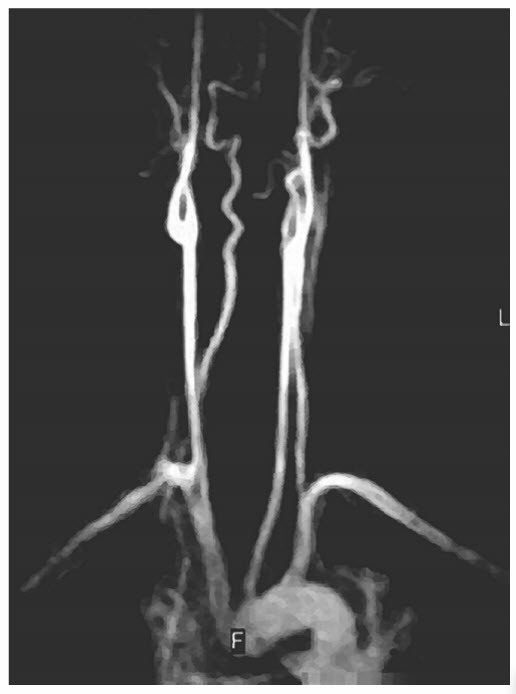Question 4#
Magnetic resonance angiography (MRA) is contraindicated in the following patient groups EXCEPT those with:
A. PacemakersB. Intracerebral shunts
C. Cochlear implants
D. Metallic stents
Correct Answer is D
Comment:
Magnetic resonance angiography (MRA) has the advantage of not requiring iodinated contrast agents to provide vessel opacification (Fig. below). Gadolinium is used as a contrast agent for MRA studies, and because it is generally not nephrotoxic, it can be used in patients with elevated creatinine. MRA is contraindicated in patients with pacemakers, defibrillators, spinal cord stimulators, intracerebral shunts, cochlear implants, and cranial clips. Patients with claustrophobia may require sedation to be able to complete the test. The presence of metallic stents causes artifacts and signal drop-out; however, these can be dealt with using alternations in image acquisition and processing. Nitinol stents produce minimal artifact. Compared to other modalities, MRA is relatively slow and expensive. However, due to its noninvasive nature and decreased nephrotoxicity, MRA is being used more frequently for imaging vasculature in various anatomic distributions.

Magnetic resonance angiogram (MRA) of aortic arch and carotid arteries. This study can provide a three-dimensional analysis of vascular structure such as aortic arch branches, carotid and vertebral arteries.